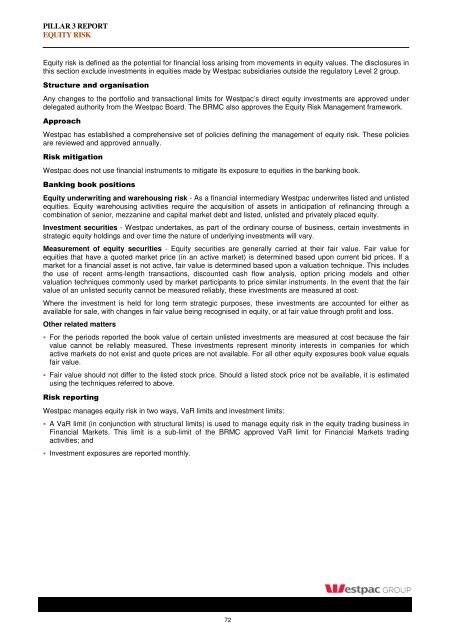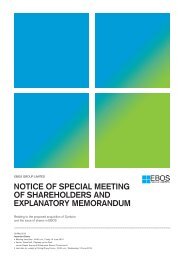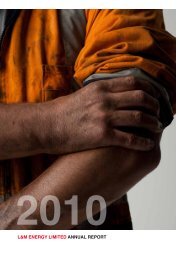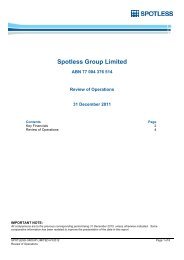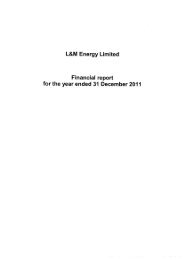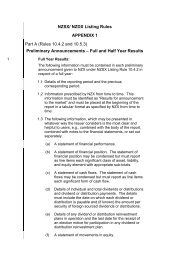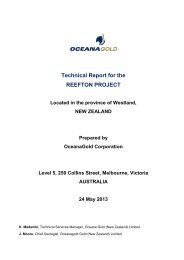Westpac Group Pillar 3 Report March 2013 - Iguana IR Sites
Westpac Group Pillar 3 Report March 2013 - Iguana IR Sites
Westpac Group Pillar 3 Report March 2013 - Iguana IR Sites
Create successful ePaper yourself
Turn your PDF publications into a flip-book with our unique Google optimized e-Paper software.
PILLAR 3 REPORT<br />
EQUITY RISK<br />
Equity risk is defined as the potential for financial loss arising from movements in equity values. The disclosures in<br />
this section exclude investments in equities made by <strong>Westpac</strong> subsidiaries outside the regulatory Level 2 group.<br />
Structure and organisation<br />
Any changes to the portfolio and transactional limits for <strong>Westpac</strong>’s direct equity investments are approved under<br />
delegated authority from the <strong>Westpac</strong> Board. The BRMC also approves the Equity Risk Management framework.<br />
Approach<br />
<strong>Westpac</strong> has established a comprehensive set of policies defining the management of equity risk. These policies<br />
are reviewed and approved annually.<br />
Risk mitigation<br />
<strong>Westpac</strong> does not use financial instruments to mitigate its exposure to equities in the banking book.<br />
Banking book positions<br />
Equity underwriting and warehousing risk - As a financial intermediary <strong>Westpac</strong> underwrites listed and unlisted<br />
equities. Equity warehousing activities require the acquisition of assets in anticipation of refinancing through a<br />
combination of senior, mezzanine and capital market debt and listed, unlisted and privately placed equity.<br />
Investment securities - <strong>Westpac</strong> undertakes, as part of the ordinary course of business, certain investments in<br />
strategic equity holdings and over time the nature of underlying investments will vary.<br />
Measurement of equity securities - Equity securities are generally carried at their fair value. Fair value for<br />
equities that have a quoted market price (in an active market) is determined based upon current bid prices. If a<br />
market for a financial asset is not active, fair value is determined based upon a valuation technique. This includes<br />
the use of recent arms-length transactions, discounted cash flow analysis, option pricing models and other<br />
valuation techniques commonly used by market participants to price similar instruments. In the event that the fair<br />
value of an unlisted security cannot be measured reliably, these investments are measured at cost.<br />
Where the investment is held for long term strategic purposes, these investments are accounted for either as<br />
available for sale, with changes in fair value being recognised in equity, or at fair value through profit and loss.<br />
Other related matters<br />
For the periods reported the book value of certain unlisted investments are measured at cost because the fair<br />
value cannot be reliably measured. These investments represent minority interests in companies for which<br />
active markets do not exist and quote prices are not available. For all other equity exposures book value equals<br />
fair value.<br />
Fair value should not differ to the listed stock price. Should a listed stock price not be available, it is estimated<br />
using the techniques referred to above.<br />
Risk reporting<br />
<strong>Westpac</strong> manages equity risk in two ways, VaR limits and investment limits:<br />
A VaR limit (in conjunction with structural limits) is used to manage equity risk in the equity trading business in<br />
Financial Markets. This limit is a sub-limit of the BRMC approved VaR limit for Financial Markets trading<br />
activities; and<br />
Investment exposures are reported monthly.<br />
72


